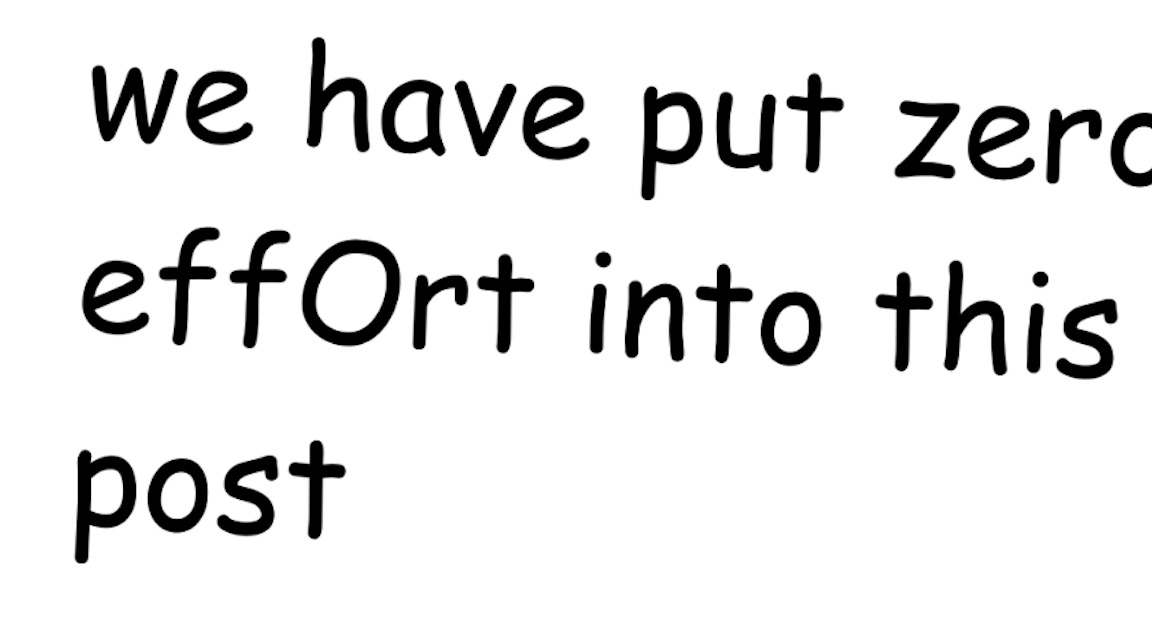This first sentence is a hook to reel you in…
I bet the ellipses and double space got you too.
This is a newsletter about Linkedin 🚀🔥💡
But not like that.
NO, not like that.
It’s about how the corporate show-off became a humble brag. How the spiky point of view became clickbait.
And how personal experiences became commodified as content.
This could easily turn into a ten-sentence filler that makes your eyes glaze over.
But I’ll keep it light – insert a Steve Jobs quote here, and wrap it up with a non-pushy push.
The. End.
The Opinion
Once upon a time in the twenty-tens, Linkedin was a professional CV – a useful tool for getting your next job, showing people what you were up to. It has always been a bit bum-clenching to announce a promotion to the world but Linkedin made the corporate show-off tolerable. It pushed us – especially us Brits – to shout about ourselves. It had a clear purpose.
But today, LinkedIn has evolved (or devolved, depending on how you look at it) into something else entirely: the corporate show-off has become the humble brag, spiky opinions have morphed into clickbait. A subreddit of Linkedin Lunatics has over 600k subscribers and we’re not surprised.
So, what happened?
LinkedIn transformed from a CV into a social network. As people started sharing more personal stories – career struggles, nursery drop-offs, periods of illness – these posts began to outperform actual professional content. Anecdotes like these have a role in fostering a more realistic portrait of what it is to have a career, and that a working life is made up of work AND life. But if you don’t want to share the more vulnerable sides of yourself with someone you once sat next to at a conference… what do you do?
As a small business, we too set goals to post more frequently on LinkedIn. But as we reflected on our lack of consistency, we asked ourselves: why weren't we posting? Was it because we didn’t have anything valuable to say, or because we didn’t want to contribute to the noise?
The Problem With the LinkedIn Formula
A formula has washed over LinkedIn, much like filters on Instagram. There’s even an AI-powered viral generator to churn it out. Posts follow a predictable pattern: that hook-you-in first line that makes you read more and then wish you didn’t. Short and stubby sentences with recycled TOP! TIPS!!! Personal experiences packaged into neat professional takeaways. Think marriage proposals mapped onto b2b sales. It’s enough to make you miss the old-fashioned corporate brag.
There are a number of problems with a device that’s used just to get attention and engagement. Firstly, the genuinely original content, when written in a formula, reads as generic because posts start to blur together. Personal anecdotes often come off as performative, crafted for likes instead of fostering real connections. And perhaps more importantly on an actual human level, frameworked vulnerability dilutes our real experiences. Life is messy and complex; it doesn’t follow a clear-cut "struggle, lesson, success" narrative arc. So why, on Linkedin of all places, are we packaging it like it is?
The Solution: Be Yourself (Yes, Really)
Jon Kallus is a copywriter and strategist with a great newsletter and a side hustle of ghostwriting for LinkedIn. Jon is more forgiving of frameworks than we are (!), acknowledging that for a lot of people – especially those who aren’t writers – frameworks reduce fear: “it’s something to lean on in the face of a blank page.” Jon says: “The biggest advice by far is to be yourself and say what’s on your mind”. His service turns a 45-minute conversation into 8 posts that sound 100% you.
Authenticity over conformity is what makes voices like Vikki Ross, who has no social media strategy beyond "talking in her own voice," stand out. She doesn’t curate a personal brand. She simply shares what matters to her. “If you feel ready to write your own posts but don't feel ready to reveal your unpopular opinion on the four Ps of branding or what strategy actually is or what time you wake up to seize the day (there's plenty of all that anyway), share something you read recently. I always share articles, talks and podcasts, and I recommend books too. People will get to know you and what you're into just by the theme of the things you share.”
Real-World Connections > LinkedIn Formulas
It’s easy to get swept up in the idea that you have to post all the time to stay relevant, but sometimes the best strategy is to spend less time on LinkedIn and more time connecting with people in the real world. Go to events like Vikki Ross’ #CopywritersUnite meet-ups, or Tom Pinchard’s creative supper clubs where real, human connections happen over three-course meals – not algorithms. Plus it’s preventatively cringe to quote Steve Jobs IRL.
And if you don’t want to post? You don’t have to. LinkedIn will keep spinning, whether you’re contributing or not.
The Vortex
A round-up of accounts that add value to the conversation:
Matthew Kilgour with his on-point Ladybird Book style strategy insights.
Bethany Joy for her clever "spot the difference" copywriting comparisons.
Alex Ames at Manors for asking smart marketing questions.
Amelia Christie-Miller for her journey as CEO of Bold Beans in her own TOV.
Ken Cheng for his hilarious parody account.
The Brand
Can’t imagine writing a newsletter about LinkedIn and not shouting out Surreal. The UK’s fastest-growing cereal brand has cut through with tongue-in-cheek humour on a platform not known for, well, humour. They break the fourth wall of the professional world and post marketing about marketing itself, often burying new supermarket launches in ramblings about using their maths GCSE, operating heavy machinery, cats and dogs. In Comic Sans font. It’s unexpected, it’s sometimes a little grating. But we’ve got to hand it to them: it really works.







